
On this second page related to the recent Coryphaeschna from south Texas (click here for the main page about this ode), I present two tentative features that may add to the suite of differences between apeora and diapyra:-
A) I noticed that two of the three apeora specimens (prepared by different persons) had some thin dark transverse lines on the sides of the thorax (see arrows in image below; In the flight shot of the Texas individual similar dark lines are just about visible, despite the blurriness of the image. Interestingly I tried to manipulate the light graph of the whole image to see if these lines could be better-expressed - many variations failed to express them better, BUT they also failed to completely suppress them, indicating to me that they are a genuine feature of the dragonfly:
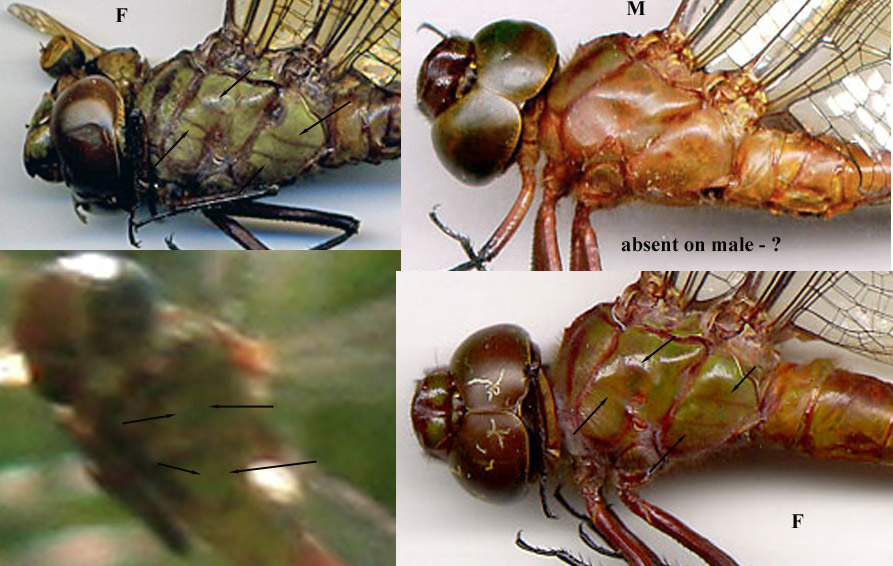
I then looked at my five images of diapyra and noticed that they also had lines in the same places - but the lines were pale, including on the equivalent pair of specimens prepared by the same two different persons as the apeora above:
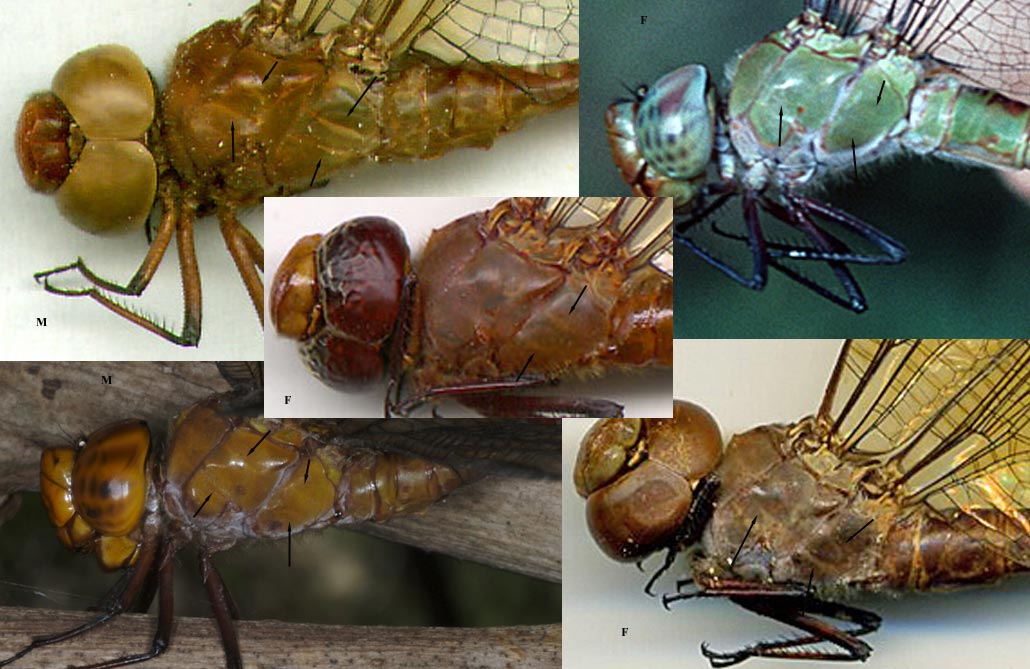
B) I decided to check the wing veination because the significant size difference might have lead to extra veination on the larger taxon (apeora). The only area that has promise is the size of the peterostigma and the number of their subtending cells:- apeora appears to have slightly longer pterostigma; on the 3 available apeora wings, the FW pterostigma subtends 4 or 4-plus cells and the HW subtends 4 or almost-4 cells; on the 3 diapyra wings the FW pterostigma subtends 3-plus cells and the HW subtends 3 or almost-3 cells:
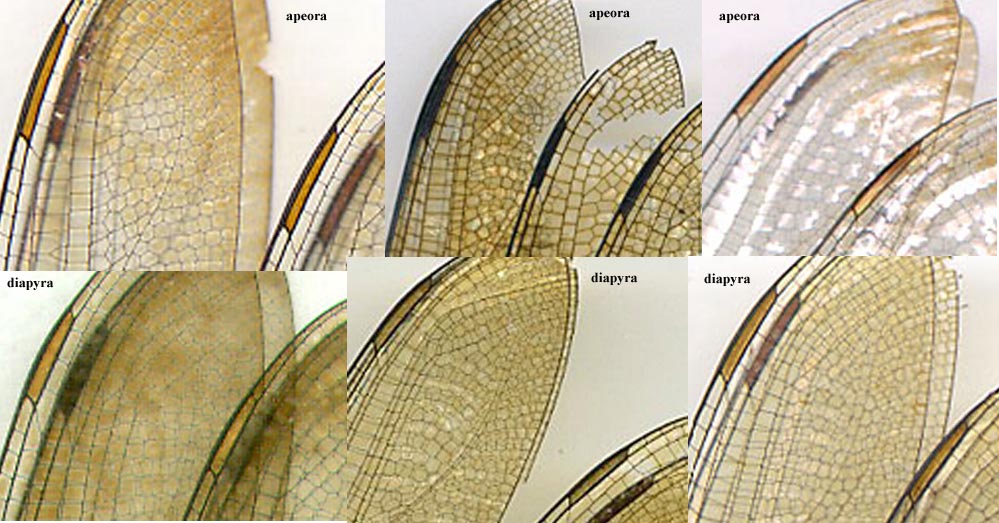
- looking at the Texas darner, the FW pterostigma subtends 4 cells and the HW subtends 4 cells:
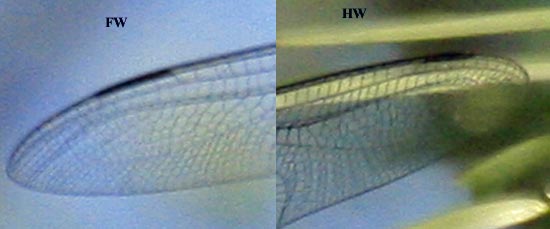
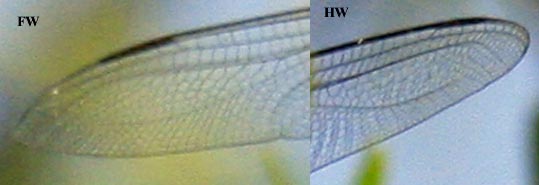
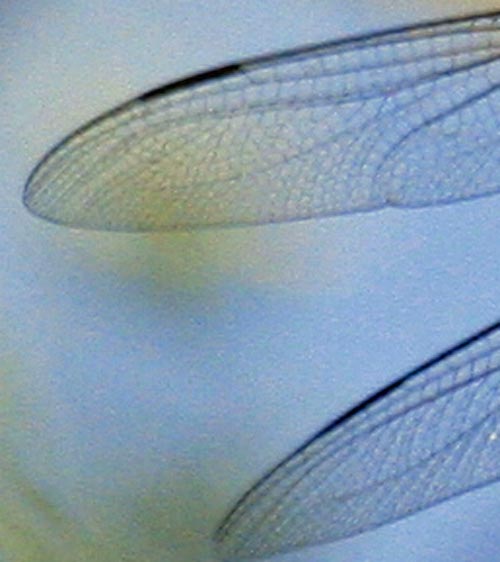
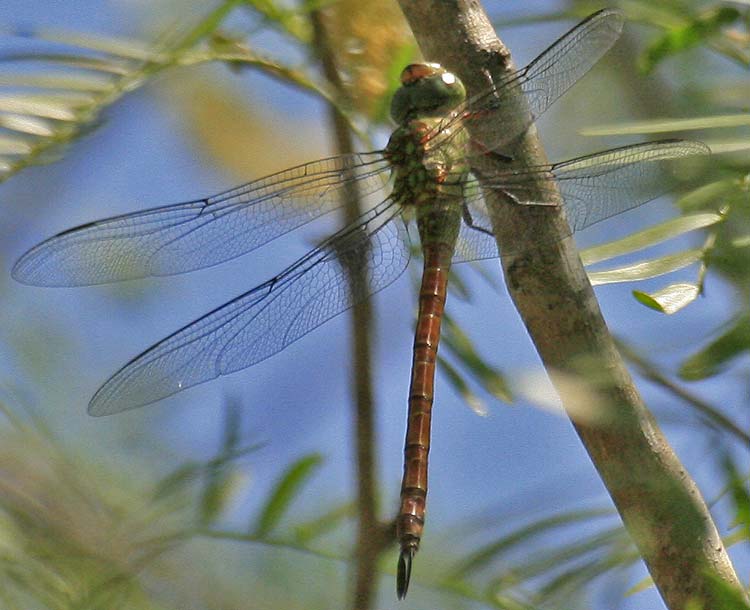
Obviously the sample size is small, and I'd appreciate getting feedback from those with photos/specimens on which they can look for the consistency (or not) of these two tentative features.